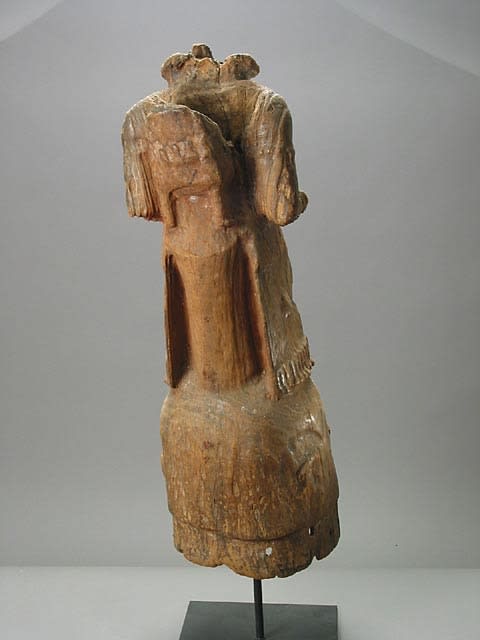Yoruba Wooden Epa Mask, 1280 CE - 1420 CE
Wood
10.25 x 31
PF.5090
Further images
There are two main elements to this mask; the lower portion or helmet, which fits over the dancer's head, and the upper superstructure in the shape of a woman with...
There are two main elements to this mask; the lower portion or helmet, which fits over the dancer's head, and the upper superstructure in the shape of a woman with a child on her back. The breasts are prominent and the stomach protruding to suggest fertility. Eyes and ears can be seen on the helmet; which is always carved in an abstract depiction of a human face. Traditionally, ancestral power is thought to be ritually associated with the helmet section of the mask. At the heart of the Epa festival is a masquerade involving three distinctive masks. After the ones representing the warrior and herbalist/priest have finished their dance, the Eyelase or "Mother-Who-Possesses-Power" makes her appearance. A woman's power is treated with respect and awe; she is the cohesive element that holds society together, the “vessel” where the physical body comes into contact with the mysterious forces of the universe, and the divine life force. When this mask appears she is immediately seen as a living metaphor for joining the most crucial aspects of society together--family, ancestors and the community. This remarkable and extremely rare mask may be seen as the antecedent to present day Epa masquerade masks. As such, it is a direct and tangible link to the distant past, commemorating through its great age the Epa festival, which honors its ancestors through an ancient ritual that joins the past with the present.







